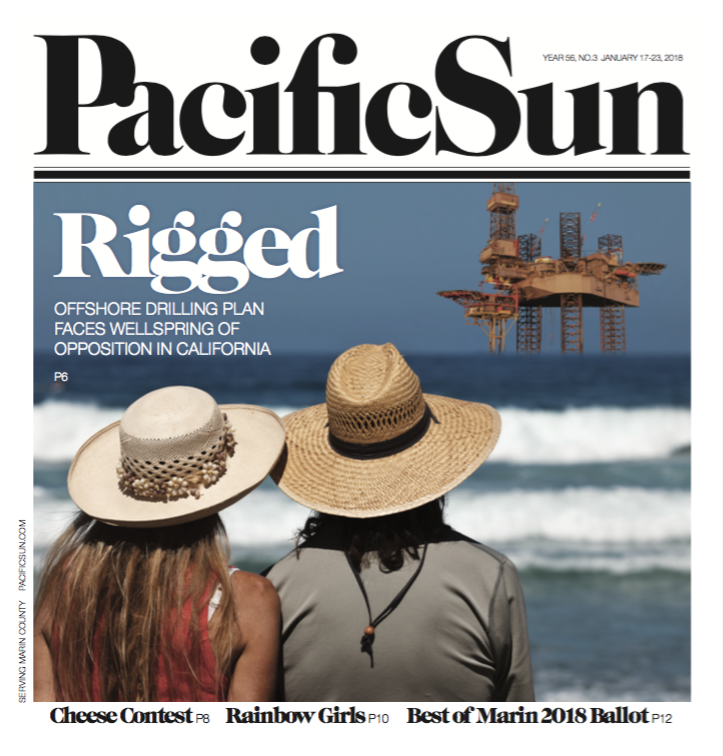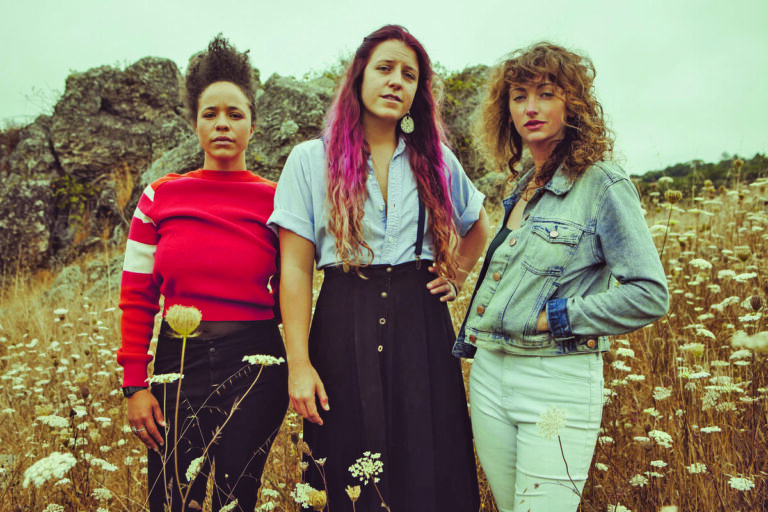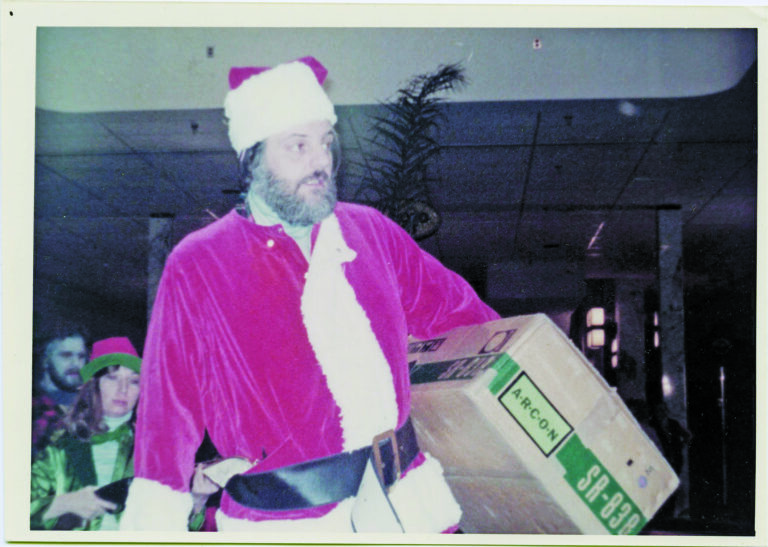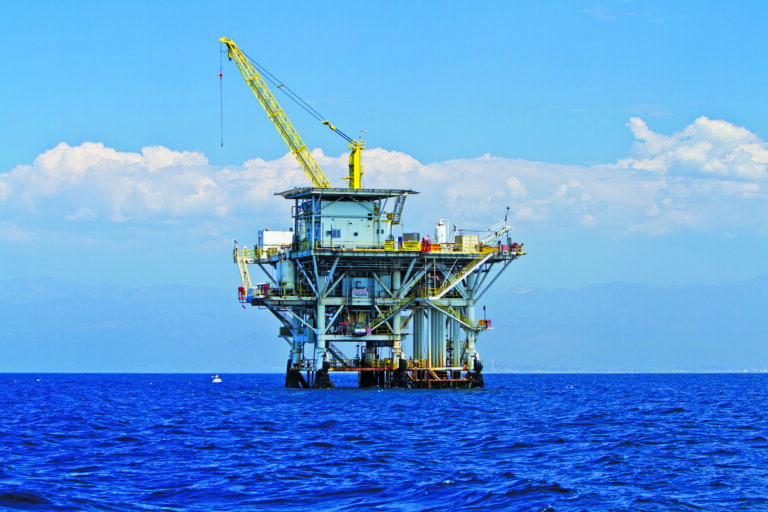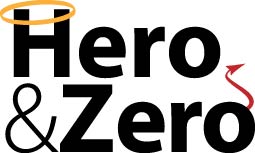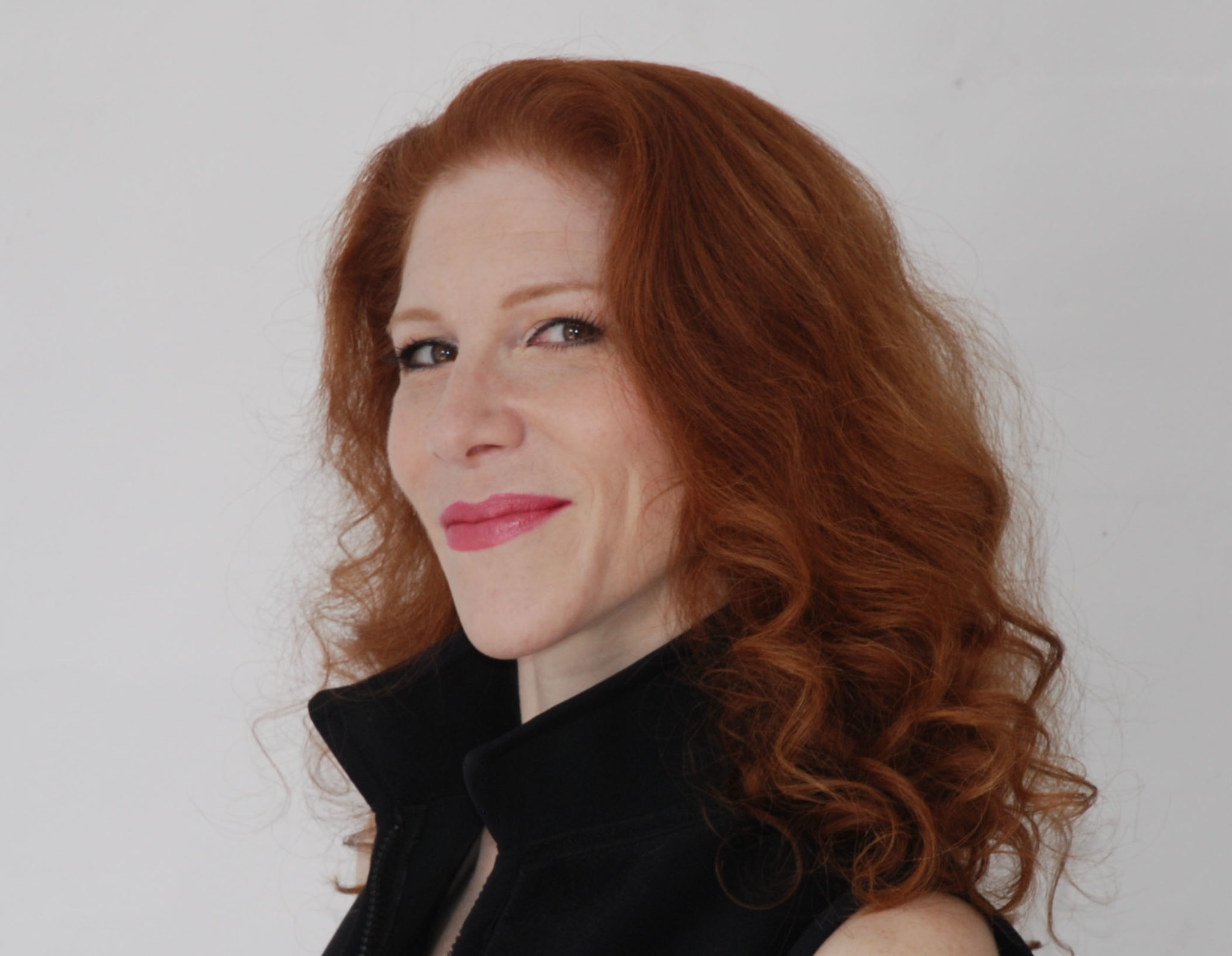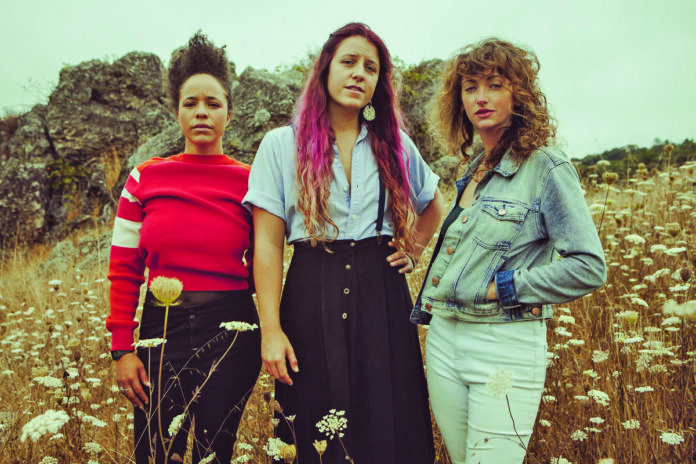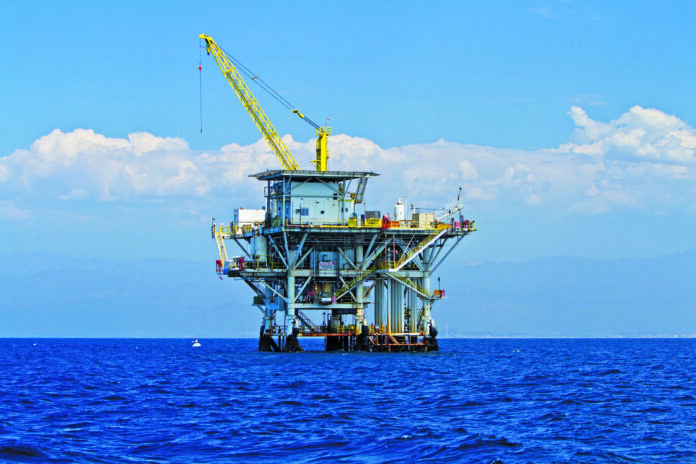Last week, Lt. Gov. Gavin Newsom was one of numerous elected officials from around the state and the nation, and across the partisan divide, to tee off on U.S. Interior Secretary Ryan Zinke for his decision to exempt offshore drilling in the vacation state of Florida while failing to do the same for blue states such as California with big tourist economies of their own.
The move by Zinke highlighted a federal energy policy under President Donald Trump to open offshore drilling, but only if it doesn’t mess with the president’s view from Mar-a-Lago.
Newsom zeroed-in his critique, via a few pointed tweets directed at Zinke, over the secretary’s rationale for giving Florida a pass from fulfilling the Trump administration’s offshore-drilling plans as detailed in a report released this month from the Bureau of Ocean Energy Management (BOEM), which operates under the aegis of the Department of the Interior.
Newsom noted that Zinke cited the impact on the state’s tourism industry as the signal driver behind his decision to keep the drilling rigs from view of beachgoers and vacationers. Zinke did not, however, extend the same courtesy to other states with a robust tourist economy: Oregon, New York, Virginia and, of course, California.
Newsom had the numbers on hand to make his point. Florida, he noted in a series of tweets directed at Zinke, had 113 million visitors in 2016, while California had 269 million statewide visitor trips. Tourists in Florida spent $109 billion; in California, they spent $126.3 billion.
“Using this logic,” tweeted Newsom, “CA’s coasts should be declared free of offshore drilling as well. Or do blue states not get exemptions?”
So far, they do not. The BOEM document, the 2019-2024 proposed draft for the National Outer Continental Shelf Oil and Gas Leasing Program (the OCS, for short), sets out a Trump-approved schedule for renewed offshore drilling from the North Atlantic around the bend of the Gulf of Mexico, and up to Northern California and the Pacific Northwest.
Under the OCS, the federal government will sell drilling leases in Northern California in 2021, and then again in 2023. The feds would offer new lease sales in Southern California in 2020 and 2022. The Central California region would also see new potential leases in 2021 and 2023.
The last offshore drilling leases in Northern California were sold in 1963, when seven exploratory wells were drilled offshore, “with no commercial discoveries,” according to the BOEM report. That same year, a dozen exploratory wells were drilled in Central California and, similarly, no oil was found. Oil was discovered in Southern California, which is where all the current leases are.
The idea is that this time around, improvements in oil-exploration technology may yield something other than mud. The problem is that those improvements are causing grave concern among opponents of offshore drilling—a concern that’s been met with outrage over the Zinke duplicity in Florida.
“Offshore drilling is inherently dangerous,” says Kristen Monsell, a senior attorney at the Center for Biological Diversity. The Oakland-based Monsell notes that the practice “causes dangerous pollution, risks devastating oil spills that kill marine life and harm coastal communities, and exacerbates the climate crisis.”
The advent of offshore fracking, which would be allowed by the Trump administration’s plan, “only heightens those risks,” she says. That process involves blasting a high-pressure water-and-chemical stew into the ocean floor, which cracks rocks and exposes oil or gas fields. “The high pressures used in offshore fracking increase the risk of well failure and oil spills.”
Then there’s the back end, says Monsell. Federal rules allow petrochemical companies to “dump their waste fluids, including fracking chemicals, into the ocean,” she says. “Scientists have identified some commonly used fracking chemicals to be among the most toxic in the world to aquatic life.”
Her organization is pushing to end all offshore drilling and vows to fight the Trump move in court. “We need to transition away from this dirty, dangerous practice and toward a clean-energy future.”
There are currently 43 offshore-drilling leases in the state of California, and all of them are in the southern part of the state off the coast of Ventura and Santa Barbara. Those wells were first drilled in 1963, and there have been 102 lease sales since the first wells were drilled and 1984. California is the third largest oil-producing state in the country, but as the Tea Party–affiliated California Policy Center noted in a 2014 report on offshore drilling in the state, crude oil production “had been declining prior to 2012.”
The advent of directional drilling could save the day for California, notes drilling advocate and author Tim Considine in a 2014 paper titled “The Benefits and Costs of Oil and Gas Development in California.” He writes that the practice “offers the possibility of safely accessing a significant portion of the estimated 10 billion barrels of offshore oil and gas from land-based drilling rigs.” Commercial drilling activity in Northern California waters had been restricted by Congress from 1991 through 2008, when President Obama moved to ban future offshore drilling activities, in one of his last moves as president.
Numerous state officials and agencies provided public comments to the Department of the Interior as it was hashing out its offshore-drilling plans—including the California Coastal Commission and the California State Lands Commission, the two agencies that would hold the key to any potential expansion of offshore drilling. They were joined by the state’s Office of the Attorney General and the California Fish and Game Commission, who all opposed the Trump plan to open California waters.
The coastal commission is responsible for implementing federally approved coastal-management programs but is “steadfastly opposed to any new leasing in ‘frontier’ areas of the OCS,” acknowledges the BOEM report. New drilling activities would mean new drilling platforms, pipelines “and other infrastructure that would likely cause significant adverse effects on coastal resources.”
Under Gov. Jerry Brown, the state has greatly expanded its onshore drilling for natural gas, often using fracking to free up trapped pockets of the gas. He was one of numerous state officials to weigh in negatively on the BOEM plan.
In its comment to the BOEM, the coastal commission cites impacts to commercial fishing, tourism, marine wildlife and wetlands, and says that “expanded use of fracking and other well-stimulation treatments increases the risk of an oil spill occurring and potentially causing devastating statewide environmental impacts.”
In his comments to the BOEM, California Attorney General Xavier Becerra said that there are plenty of drilling opportunities in the state and that “this lack of leasing of areas offshore California has not posed an obstacle to the development of plentiful supplies of domestic oil and gas.”
Becerra also observes in his BOEM comment that oil companies were not exactly falling over themselves to pursue new drilling exploratory wells in state waters—given, among other things, regulatory impediments from the state—even if there’s general support in the industry to undo the Obama no-drill push.
The Shell Oil Company, for example, urged Zinke in the BOEM report to “make new OCS areas available to assess the extent of United States energy resources,” as it expressed disappointment in the Obama administration for banning offshore drilling and urged Trump to “quickly replace the current national OCS program and grant access to new areas.” Shell has numerous leases in Southern California waters. So do the Koch Brothers.
Where offshore drilling is already being undertaken in California, localities have also chimed in with dismay at expanded leasing. The city of Santa Barbara is opposed to any new oil and gas lease sales and also voted on a city resolution in 2017 that pledged a “phase-out of all oil and gas extraction and a framework for responsible renewable energy development.”
Curiously, and perhaps tellingly, Chevron U.S.A., which operates a robust oil-and-gas refinery operation in Richmond, was less demonstrative than Shell in its embrace of the new drilling timetables in the BOEM report, especially as it relates to drilling in California. It appears that Chevron is not at all interested in pursuing drilling or exploration in Central or Northern California. In its comments to the BOEM, the company did say the federal government “should move expeditiously to open unavailable submerged lands with believed resource potential for exploration and development.”
But Chevron also provided a ranking to the BOEM of its most desirable areas for exploration and development. Its first three are three regions of the Gulf of Mexico under consideration for expanded drilling (last week Zinke exempted the Eastern Gulf, which abuts Florida, from drilling). The next three are three regions of the Atlantic Ocean, and “the Southern California Planning area was ranked seventh.” The company did not comment on drilling in Central and Northern California in the BOEM report—or in a follow-up email sent in response to questions from the Pacific Sun about its plans post-Zinke. Unlike Exxon, the company currently has no offshore leases in California.
“Chevron encourages expansion of domestic and global energy production, including development of energy resources on federal lands onshore and offshore,” says Veronica Flores-Paniagua, a spokeswoman for Chevron North America. “Our U.S. offshore priorities are continued exploration in the Gulf of Mexico deepwater, and to better understand the potential of the Atlantic waters off the East Coast.”
This year, says Flores-Paniagua, the company plans to invest $3.3 billion in its holdings in the Permian Basin (located in the American Southwest), out of a total $8 billion planned domestic investments.
As it set out to reopen offshore drilling, the BOEM also heard from Florida’s Department of State and other of its agencies engaged in wildlife conservation. NASA also chimed in with concerns of its own about offshore rigs’ affecting future space missions.
Those comments appeared to hold sway over Zinke last week, while California’s concerns were brushed off.
Florida is led by Republican Gov. Rick Scott, who supported Donald Trump for president in 2016. The state as a whole went for Trump that year in edging out Hillary Clinton by about 100,000 votes. The president spends significant time in the state, playing golf at Mar-a-Lago, a resort that boasts a lovely view of the Atlantic Ocean.
Zinke’s announcement regarding Florida, says Monsell, “clearly shows the total incompetence of this administration. One day it’s in the plan and a few days later it’s out? That’s not at all how the process is supposed to work.”
She notes that the federal Outer Continental Shelf Lands Act, enacted in 1953, “requires the administration to consider several specific factors in developing an offshore oil and gas leasing plan in light of national energy needs and the risks of offshore drilling.”
“Helping Republicans to win elections,” she adds, “certainly isn’t one of those factors.”
Monsell invoked the administration’s penchant for fickleness in the move to exempt Florida.
“Basic principles of administrative law require the agency to carefully consider its decisions and public input, not change its mind on a whim. Notably, a former White House ethics chief finds it problematic that the secretary has [decided to] exclude the state with Mar-a-Lago while many other governors have voiced their opposition to leasing.”
Former White House ethics chief, Walter Shaub, tweeted the following at the president last week: “So you are exempting the state that is home to the festering cankerous conflict of interest that the administration likes to call the ‘Winter White House’ and none of the other affected states?”
All the attention on Zinke and the BOEM report, says Robert Bea, has only served to underscore a key piece of the debate over offshore drilling that hasn’t gotten nearly the attention: Trump administration proposals in the federal register that would roll back advances and regulations that were developed after the 2010 BP Deepwater Horizon disaster in the Gulf of Mexico.
Bea, a professor emeritus at Berkeley, is an engineer and risk-assessment analyst who worked as a consultant for BP in the aftermath of the worst human-made environmental disaster in the nation’s history. He supports offshore drilling when done properly, and last year got a call from Australian officials who were then puzzling over a BP proposal to drill in the environmentally sensitive Great Australian Bight. The proposal put to the Australian parliament, says Bea, was to do “exploratory drilling in an environmentally sensitive area, basically using the same approaches and systems that they’d used in the Gulf of Mexico with Deepwater.”
Bea’s ultimate assessment was that it was too risky to drill—that the risk of a major environmental disaster was not offset by any urgency to extract the oil—and the experience stayed with him.
“When I saw this current two-pronged proposal in offshore California and other sensitive areas,” he says, “I pushed into gear the same thinking. And based on the administration’s proposal to roll back the regulations, I think the answer is pretty clear, and the answer is that the risks associated with [the BOEM] proposal are not acceptable or tolerable.”
Bea stresses that he is not at all opposed to offshore drilling and says that the rigs “are a part of our human struggle to recognize and exploit the blessings of our natural resources. I wouldn’t scream about the exploring of natural resources unless we are doing it irresponsibly.”
Bea has reached out to other nations, including Great Britain and Norway, which host international energy-exploration firms of their own, to gauge their response to the Trump one-two push on deregulating and expanding the offshore-drilling industry stateside.
“There is not one who thinks these current proposals are sensible or rational,” he says.

